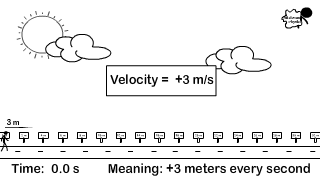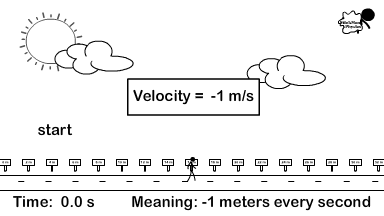Visualize your physics variable and the differences between displacement, velocity, and acceleration. Click here to see a video lesson about the difference between a few scalars and vectors.
Displacement (X) is the change in an objects position. The unit for displacement is the meter (m) Displacement is a vector that includes position change and direction from the origin. The origin in the starting point.
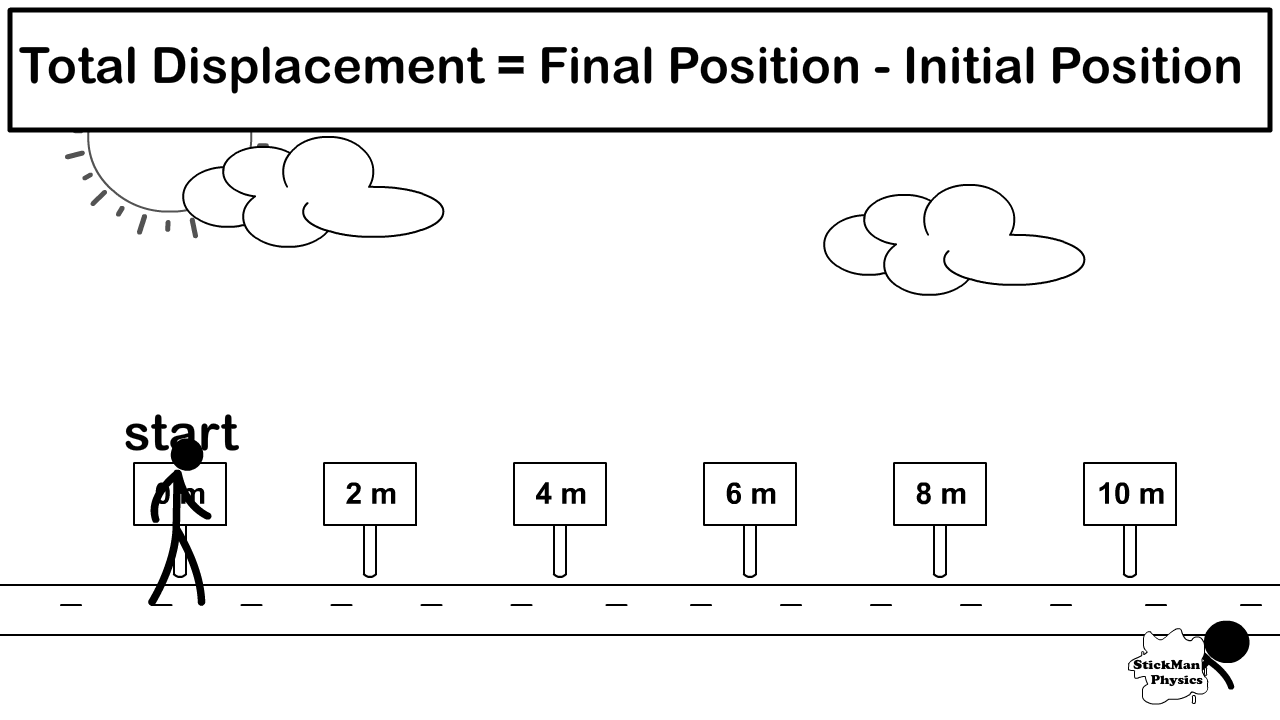
Velocity (v) is the change in displacement over time. So if you are traveling at a velocity of +1 m/s you will travel a displacement of 1 meter forward per second. Because of this the unit is meters per second or m/s. So look at the various displacements in the animation to see what it means to change a displacement. See the different between a velocity of -1 m/s, -1 m/s, and 3 m/s. If you have changing motion velocity is not just v but vi representing initial velocity or vf representing final velocity.
Acceleration (a) is a change in velocity over time. Because it is the change in meters traveled per second and the unit is m/s/s or m/s2. So if you are accelerating in the same direction then you will travel more meters in the next second. The picture on the right is showing you an acceleration of 0.5 m/s2. This means that every second the velocity increases by 0.5 m/s.
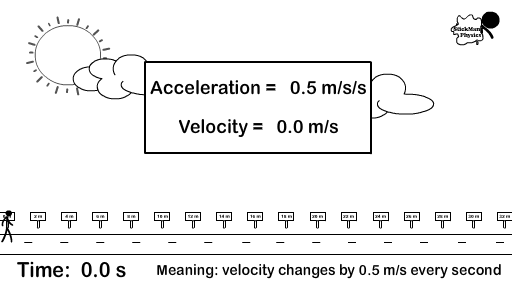
Force (F) has Newton (N) as its unit. One newton is derived or the same as one kg x m/s2 which relates to mass and acceleration. Force is created by a push or pull. The main force equation is derived in Newton's Second Law in equation form Fnet = ma.
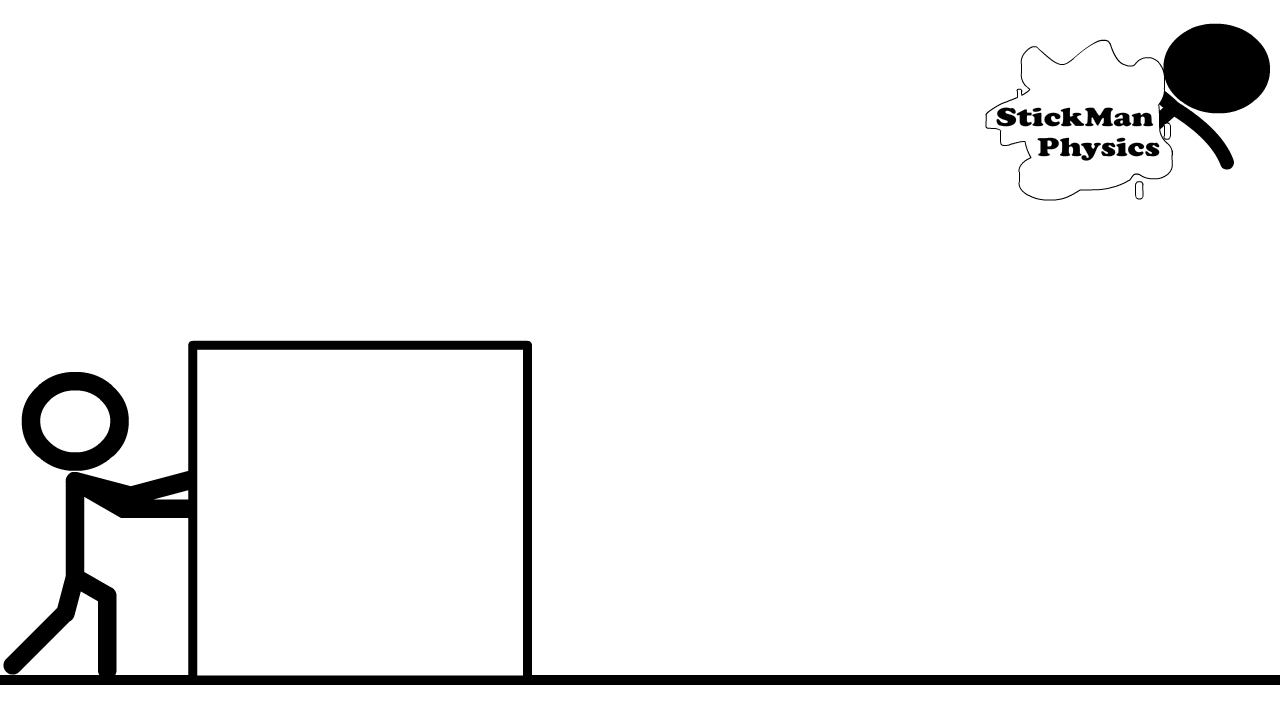
Links
- Back to the Stickman Physics Home Page
- For video tutorials and other physics resources check out HoldensClass.com
- Find many of your animation resources in one place at the StickMan Physics Gallery
- Equation Sheet

